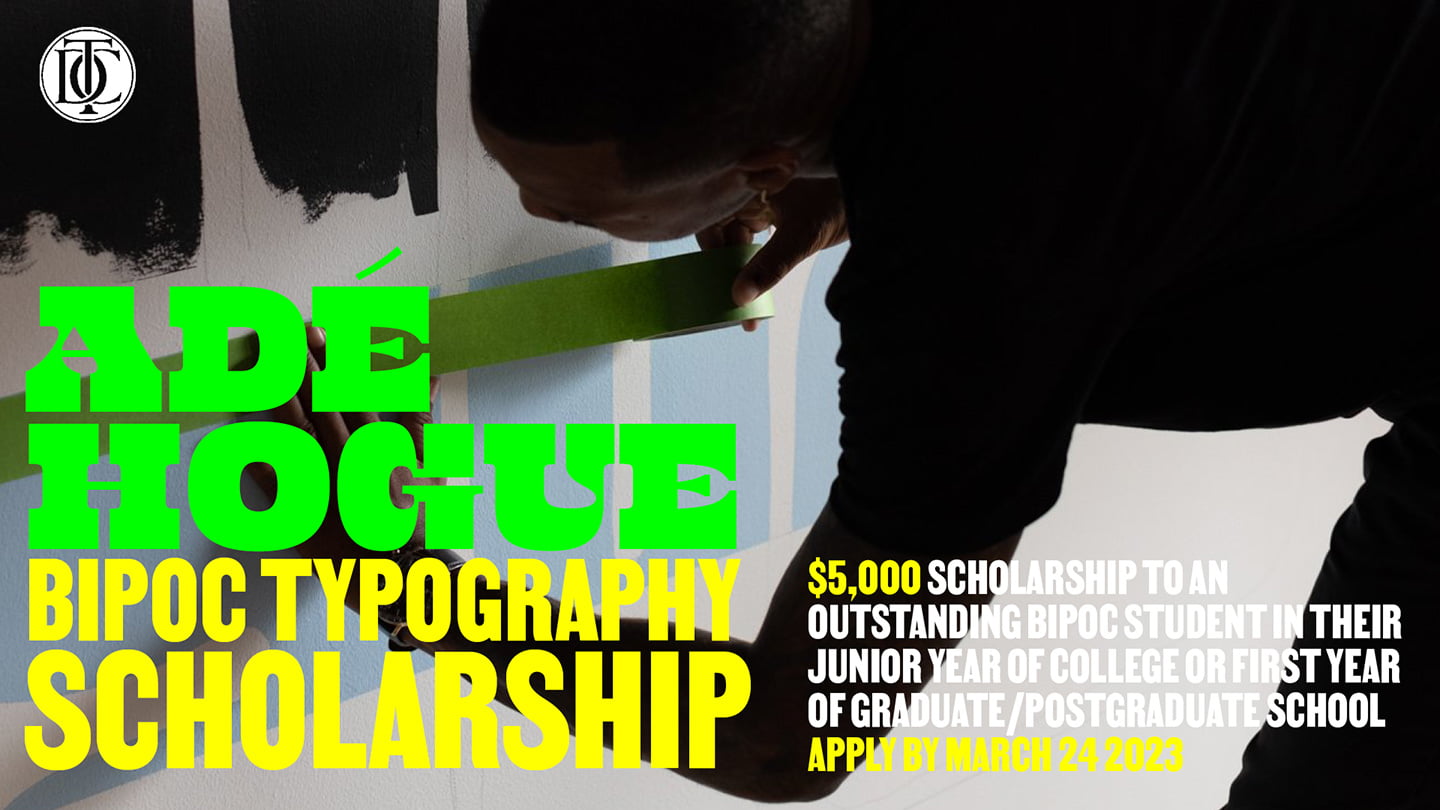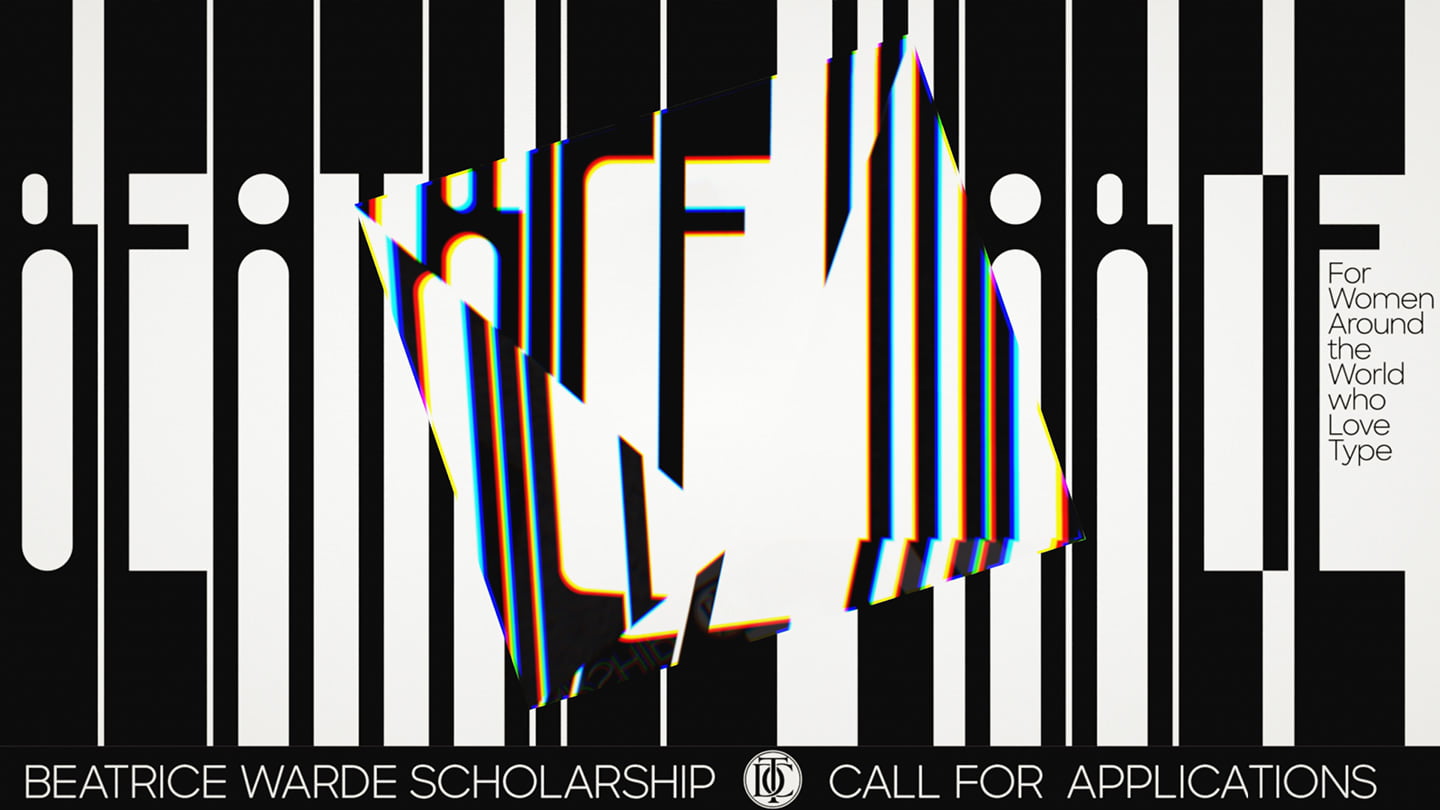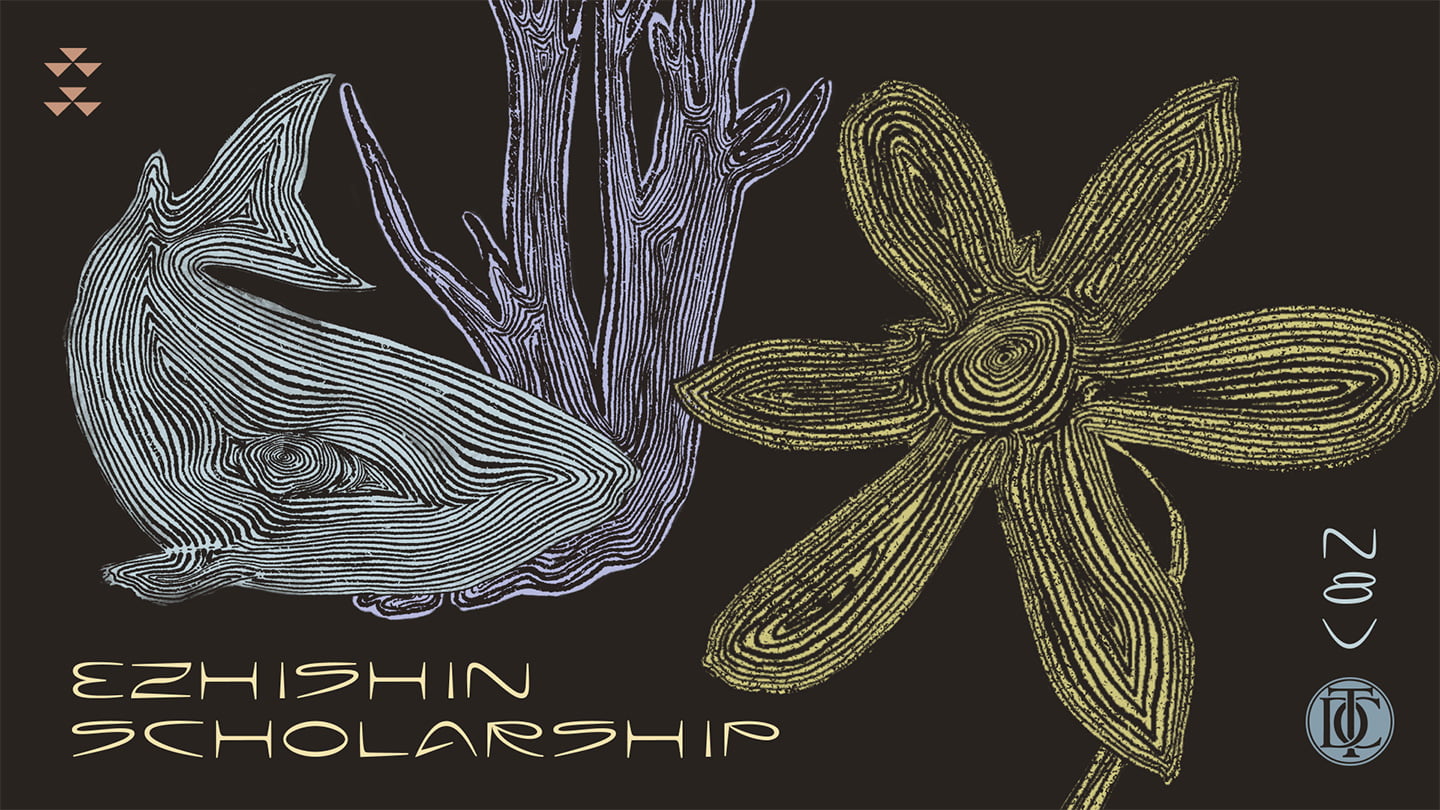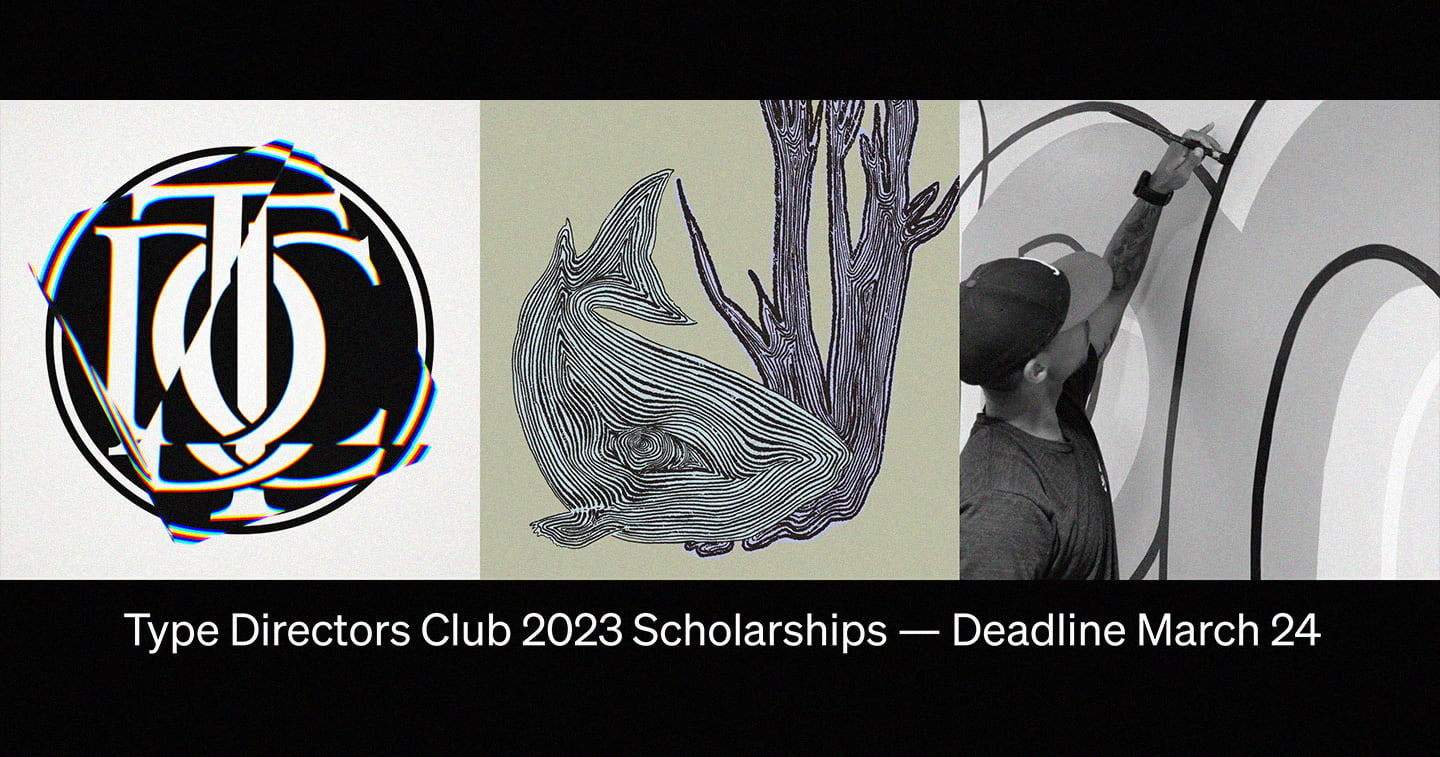NEW YORK, USA — The Type Directors Club, the world’s leading typography organization, has opened the call for applications for their three student scholarship programs.
The programs, which all have an entry deadline of March 24, 2023, are as follows.

Adé Hogue Scholarship, sponsored by Monotype, is in commemoration of gifted young Chicago-based art director, designer, letterer, and avid cyclist Adé Hogue, in cooperation with the Broderick Adé Hogue Foundation.
TDC will award the $5,000 scholarship to an outstanding BIPOC student globally in their junior year of college or first year of graduate or postgraduate school who demonstrates exceptional talent and promise in the design or use of letterforms.
Adé Hogue Scholarship committee chair is Douglas Davis, strategist, author, and professor at City University of New York, and branding was designed by Morcos Key Founder Jon Key. The program was originally launched as the TDC SuperScript Scholarship in 2020 by former Board member Bobby C. Martin, Jr., before he headed up the rebranding last year.

Beatrice Warde Scholarship, also sponsored by Monotype, is named after the journalist, typographical scholar, and communicator on typography who was the first female member of the TDC. She enthusiastically believed in the merits of education and championed them throughout her professional career with Monotype.
The $5,000 USD scholarship recognizes a woman college student globally in their junior year of undergraduate study whose work demonstrates exceptional talent, sophistication, and aptitude for typography, lettering, type design, and/or design criticism.
TDC Executive Director Carol Wahler is chair of the Beatrice Warde Scholarship committee. Branding for this year’s program was created by graphic designer Marta Cerdà Alimbau, with CGI graphics by FINO STUDIO, both based in Barcelona.

TDC Ezhishin Scholarship, sponsored by Google, is new this year, initiated by TDC Managing Director Ksenya Samarskaya in conjunction with last Fall’s successful Ezhishin conference, the first-ever panel and workshop event dedicated to Native North American typography.
The $5,000 scholarship is for Native American and First Nation individuals, whether current students or those that want to supplement their education via post-grad programs, applicable workshops, or self-initiated projects. The applicant should reside either in the US or Canada, and demonstrate a creative practice that explores typography, type design, or relevant linguistic work.
The Ezhishin Scholarship committee chair is Leo Vicenti (Jicarilla Apache), with branding designed by Bobby Joe Smith III (Lakota).
In addition to the financial awards, the winners of each scholarship receive a one-year TDC student membership, which includes a copy of the TDC Annual Typography 44, and complimentary admission for all TDC events.
Please go here for more information about each scholarship and to apply.
The One Club for Creativity, producer of The One Show, ADC Annual Awards, ONE Asia Creative Awards, Type Directors Club competition, TDC Ascenders, Young Guns, and more, is the world’s foremost non-profit organization whose mission is to support and celebrate the global creative community. Revenue generated from entries to its global awards shows goes back into the industry to fund programming under the organization’s four pillars: Education, Inclusion & Diversity, Gender Equality, and Creative Development.








